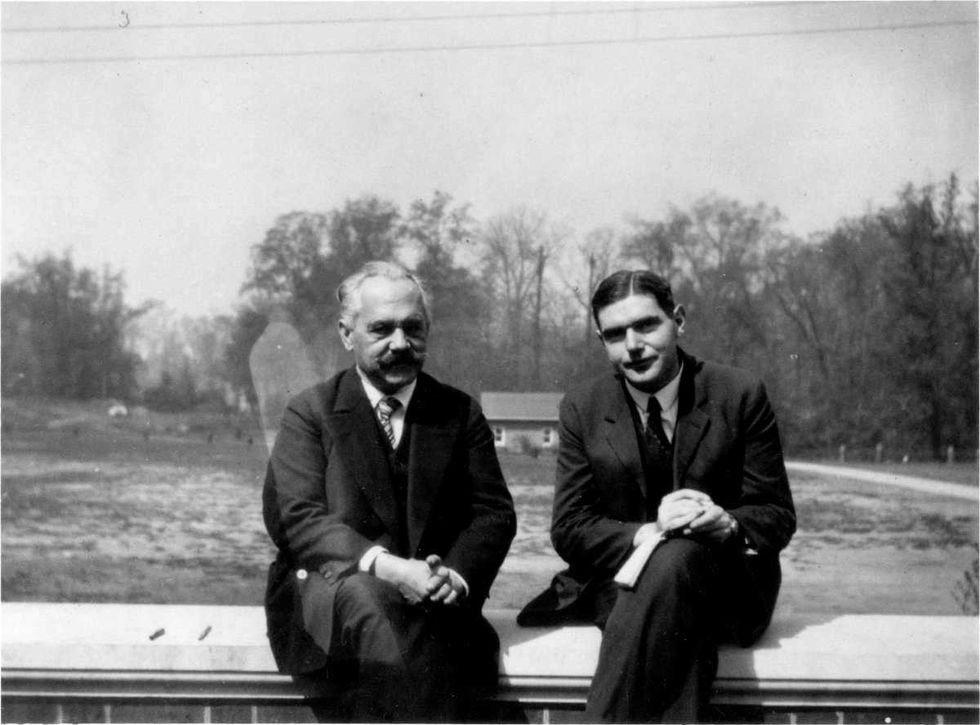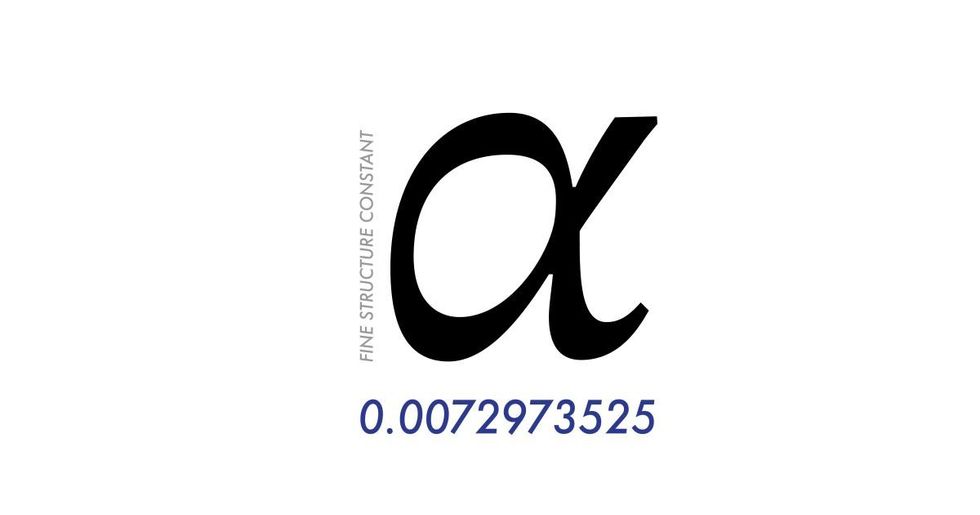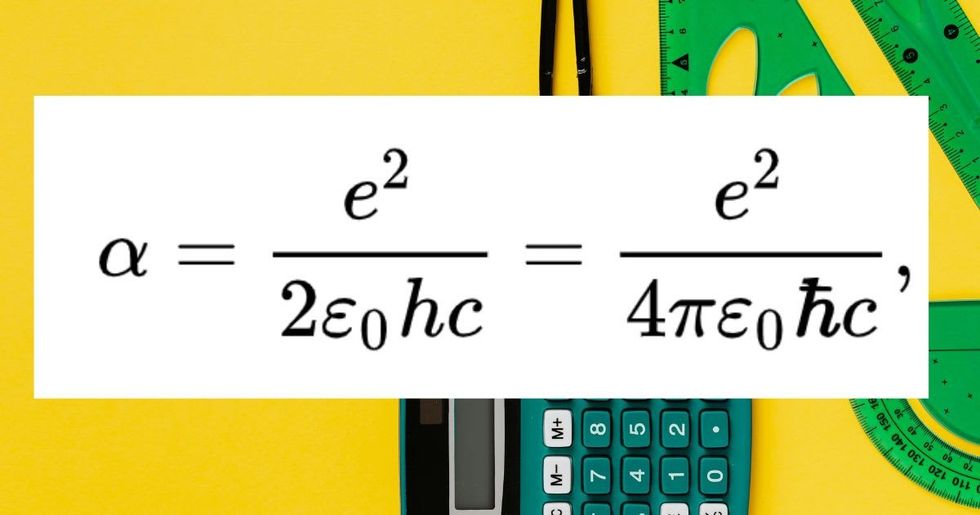Everything in the universe from the tiniest ant to a gigantic star is made up of atoms that have been observed to depict a peculiar property. When matter interacts with other matter, atoms usually absorb and emit electromagnetic radiation of specific wavelengths called spectral lines. One element, for instance, hydrogen, emits a specific spectrum of light, and others have their own. But in the early 20th century, when more sophisticated instruments were available, physicist Arnold Sommerfeld noticed a discrepancy. He observed that not all spectral lines were uniformly distributed in the spectrum.

Some featured a strange split, which turned out to be a constant multiple of one particular number. From his research, he introduced the “fine-structure constant” or “1/137,” per Space. For decades, the seemingly random number has boggled the minds of mathematicians and quantum physicists alike.

Known as “α” or “alpha” in quantum mechanics, the curious number is defined as the square of the elementary charge (e) divided by the product of 4π, the permittivity of free space (ε₀), the reduced Planck constant (ℏ), and the speed of light (c). This results in a pure number that can be described by the mathematical equation ”α = e²/(4πε₀ℏc)”.

One of the strangest things about this constant is that it is dimensionless and it has no units. Other constants in physics like c, which represents the speed of light and G, which represents gravitation, have dimensions. While c is written in the form of “meters per second,” G is written for “meters per second square.” But unlike these constants, α doesn’t have any unit. The second discrepancy about 1/137 is that it is not actually a constant. It is, to be specific, “1/137.03599913," per IFL Science.
If the number made its appearance only in Sommerfeld’s spectral lines hypothesis, then it could easily be scooped out of scientists’ deep ponderings. But then they realized that this odd number appeared everywhere. For instance, the repulsive energy between two electrons is 137 times smaller than a photon, according to PBS Space Time. Also, the orbital speed of an electron in the ground state of Bohr’s model of the hydrogen atom is 137 times slower than the speed of light. For all these reasons, the number has listed itself in one of the most intriguing mysteries of physics.

Physicist Richard Feynman famously wrote about this number in his 1985 book “QED: The Strange Theory of Light and Matter.” “It has been a mystery ever since it was discovered,” Feynman wrote, “All good theoretical physicists put this number up on their wall and worry about it.” Michael Brooks called it “the answer to life, the universe, and everything.” Although the real meaning of the number is still beyond the grasp of science, scientists at least have a few ideas and potential explanations.
The National Institute of Standards and Technology describes the fine-structure constant as one of the universe's key physical constants. “It's a measure of the strength of the interaction between charged particles and the electromagnetic force,” explained SUNY Stony Brook astrophysics professor Paul Sutter, per Space. “If it had any other value, life as we know it would be impossible. And yet we have no idea where it comes from,” he added. Physicist Laurence Evans says that without this constant, "physics, chemistry, biochemistry would be totally different – and we might not be around to talk about it." Speaking to Quanta Magazine, Holger Müller said, “In our everyday world, everything is either gravity or electromagnetism, and that’s why alpha is so important.”

PBS Space Time explains that one interpretation for this mysterious number can be a concept referred to in physics as “coupling.” When two particles get close to each other, there is a possibility that they’ll interact, which can happen in many different ways. Alpha, they explain, is the “coupling strength of electromagnetic force,” which means that it defines the probability of a particular type of interaction between the particles. Alpha also determines the size of atoms, making them less or more tightly bound to the nucleus.

Not only does the number 1/137 pique the curiosity of mathematicians and scientists but also mystics. According to HowStuffWorks, the Kabbalist concept of “connecting with light” or “enlightenment” very closely mirrors the physical interpretation of “light in quantum physics” that this number is related to. However, despite all the physical and spiritual speculations, the fine-structure constant remains an unsolved enigma that seems to secretly govern human life and the universe beyond.


















 Music isn't just good for social bonding.Photo credit: Canva
Music isn't just good for social bonding.Photo credit: Canva Our genes may influence our love of music more than we realize.Photo credit: Canva
Our genes may influence our love of music more than we realize.Photo credit: Canva
 Great White Sharks GIF by Shark Week
Great White Sharks GIF by Shark Week

 Blue Ghost Mission 1 - Sunset Panorama GlowPhoto credit:
Blue Ghost Mission 1 - Sunset Panorama GlowPhoto credit: 
 medical school brain GIF
medical school brain GIF woman leaning on man's shoulder
Photo by
woman leaning on man's shoulder
Photo by 
 Ripe bananas
Ripe bananas How we treat produce could be changing for the better.
How we treat produce could be changing for the better.
 The hole in the ozone layer in 2015.Photo credit: Wikimedia Commons
The hole in the ozone layer in 2015.Photo credit: Wikimedia Commons In the 1980s, CFCs found in products like aerosol spray cans were found to cause harm to our ozone layer.Photo credit: Canva
In the 1980s, CFCs found in products like aerosol spray cans were found to cause harm to our ozone layer.Photo credit: Canva Group photo taken at the 30th Anniversary of the Montreal Protocol. From left to right: Paul Newman (NASA), Susan Solomon (MIT), Michael Kurylo (NASA), Richard Stolarski (John Hopkins University), Sophie Godin (CNRS/LATMOS), Guy Brasseur (MPI-M and NCAR), and Irina Petropavlovskikh (NOAA)Photo credit: Wikimedia Commons
Group photo taken at the 30th Anniversary of the Montreal Protocol. From left to right: Paul Newman (NASA), Susan Solomon (MIT), Michael Kurylo (NASA), Richard Stolarski (John Hopkins University), Sophie Godin (CNRS/LATMOS), Guy Brasseur (MPI-M and NCAR), and Irina Petropavlovskikh (NOAA)Photo credit: Wikimedia Commons